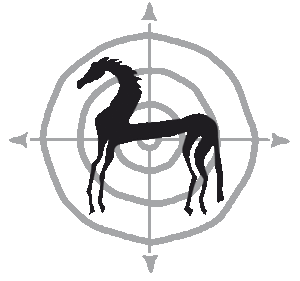Hurry or wait – What is the best working gait?
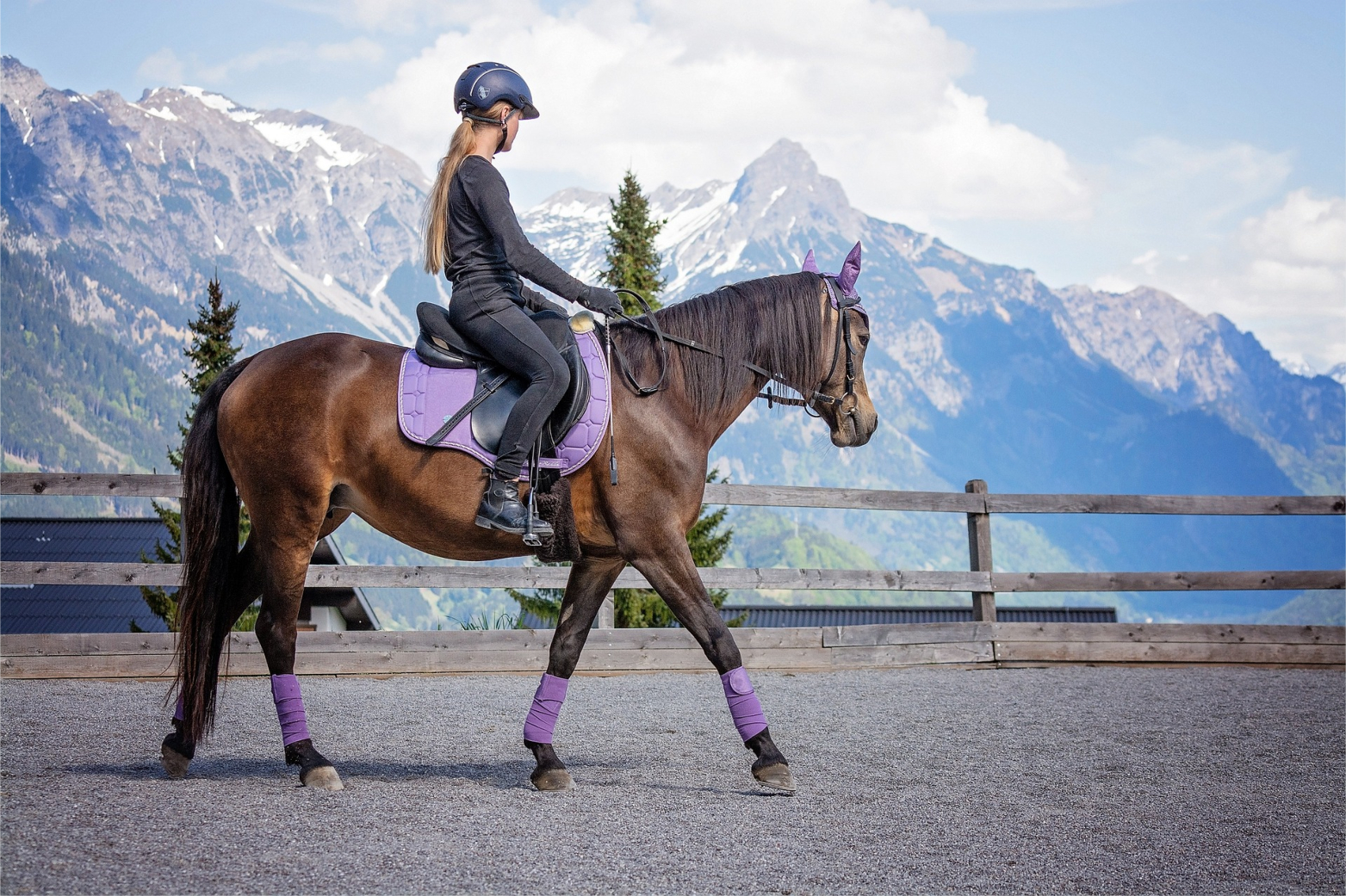
Want to keep your horse healthy? Then it’s not just about how long you should walk, trot and canter. The question is if you ride the RIGHT walk, trot and canter.
How fast or how slow you ride can make a huge difference. Hurry or wait – what is the best working gait?
Horses are not designed for riding
Horses are meant to be horses. Their body and mind are very well suited to running around freely with their buddies.
We ride horses – but their bodies are not really ‘designed’ to carry a human on their back.
What does that mean for us as riders?
It means that we not just have to think about WHAT we do with our horses when we ride, but also very much HOW we do things.
Some training methods make the horse’s body better. (Read more about the HorseCompass training philosophy here.)
There are also training methods that will damage the body of the horse.
To keep our horse healthy and happy, it is very important to ride our horse in such a way that his body gets better – not worse – every time we ride!
Topline, forehand and hind end
The whole back and the neck of the horse are called the ‘topline’. If we want to keep the horse’s body healthy, we have to make the whole topline stronger. Especially the part behind the saddle (loins).
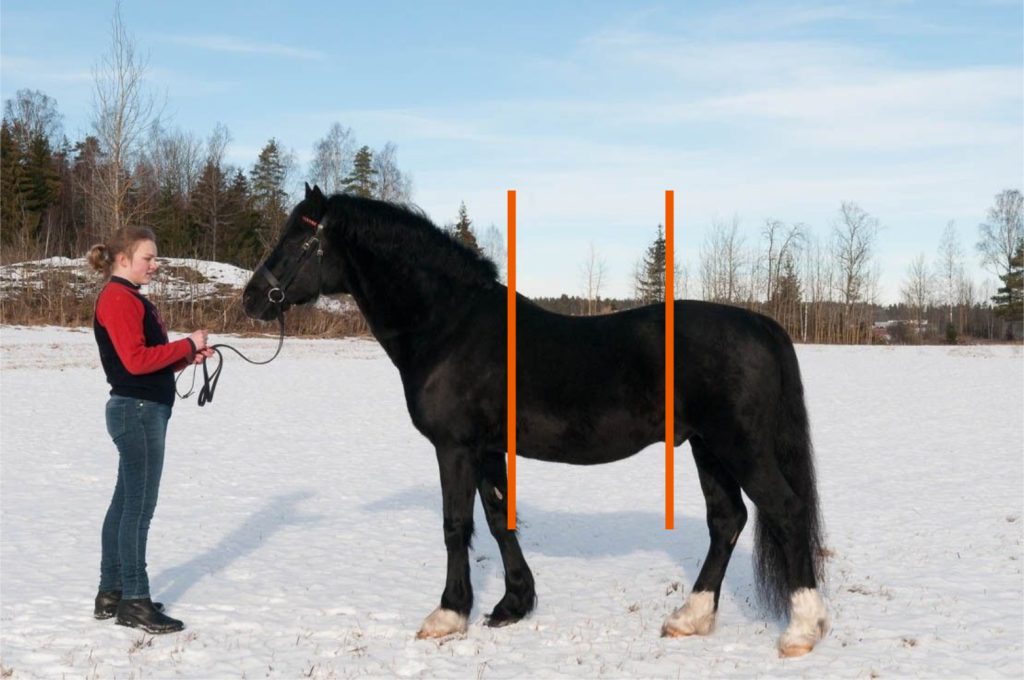
The parts of the horse: Forehand, Body and Hind End
Also, the rider does not sit in the middle of the horse. We sit closer towards the shoulder. Because of that, the horse gets a lot of extra weight on his front legs. That can be damaging.
Therefore, we want the horse to ‘re-balance’ and start carrying more weight with his hindlegs.
In riding terms too much weight in front is called ‘being on the forehand’ (not good!) as opposed to the horse ‘carrying himself’ or ‘going in balance’. This last one is what we should aim for, all the time – to avoid unnecessary wear and tear on our horse’s body.
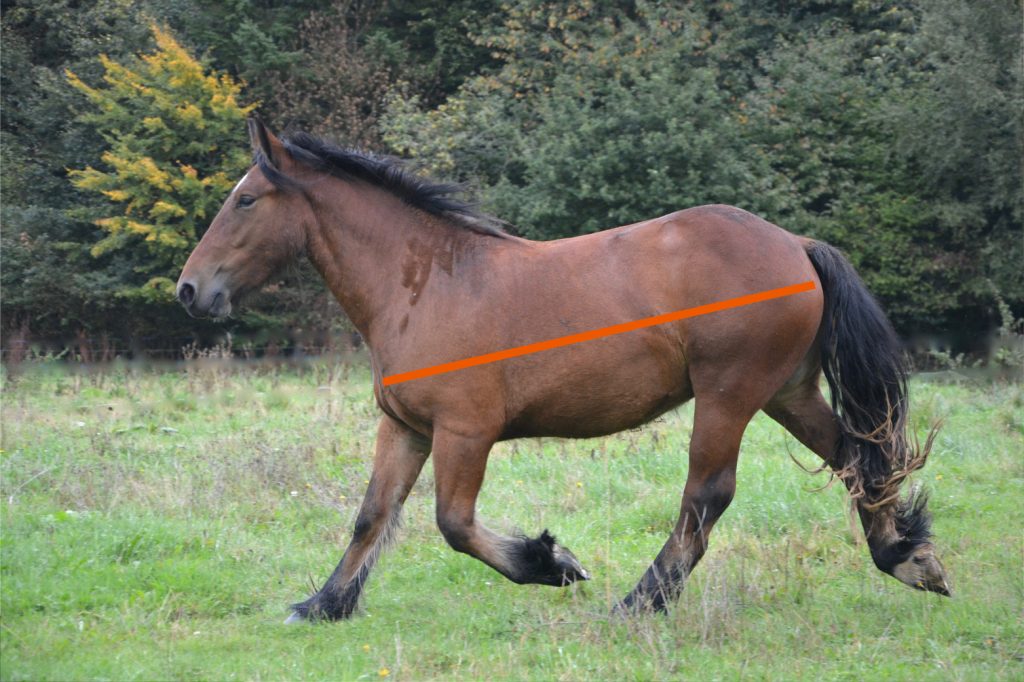
This horse is trotting ‘on the forehand’. It is easy to see that a lot weight will land on those front legs!
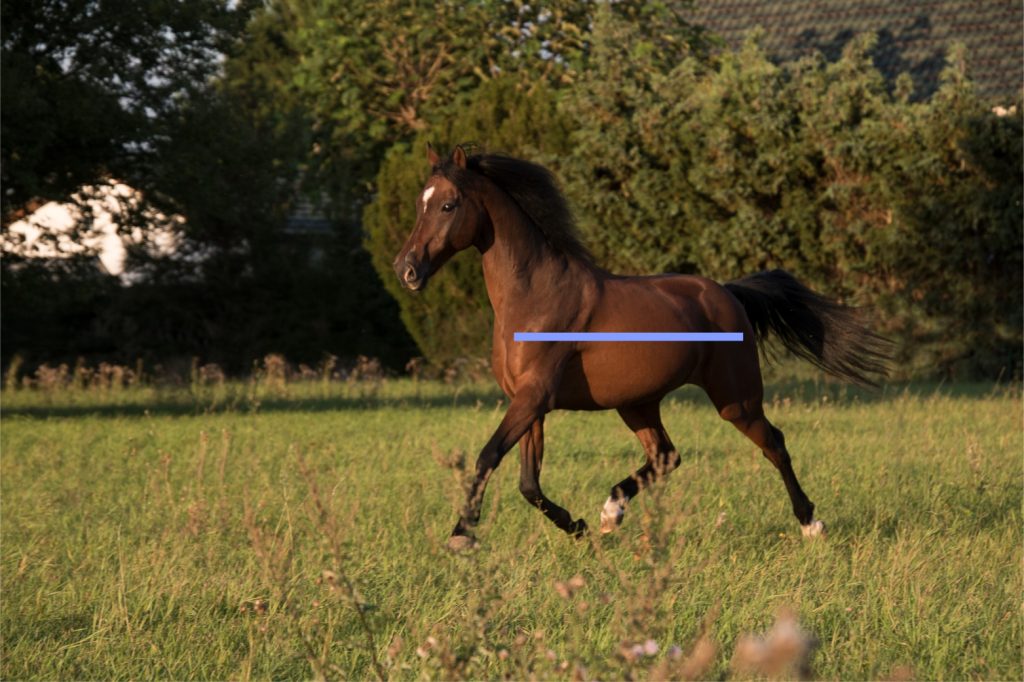
This horse is trotting ‘in balance’. The hindleg is actively stepping under and ‘lifting’ the body of the horse.
Don’t get caught in the speed trap!
I see a lot of riders who misunderstand this. They feel that their horse needs a good workout. So they ‘race around’, riding round after round at a fairly high speed.
This is not only useless – it can damage your horse!
If the speed is too high, the horse cannot balance itself anymore. And the horse ‘falls on the forehand’. Which is not what you want (see above).
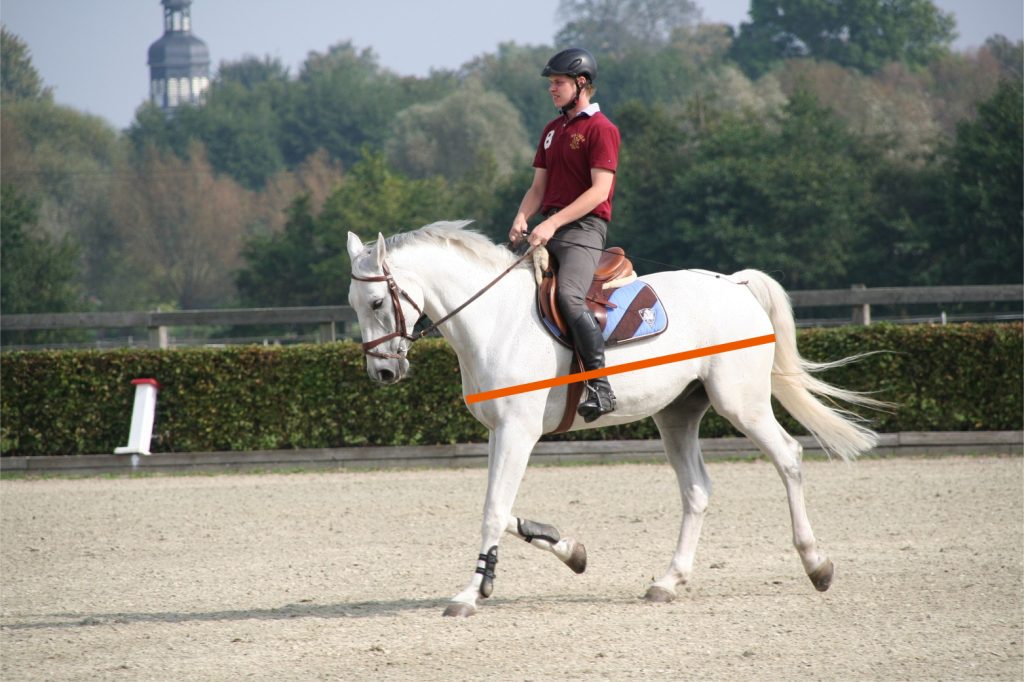
This horse is pushed ‘on the forehand’.
Other riders let their horse go very, very slow… This is not helpful either.
If the tempo is too low, the horse is just not working hard enough to develop the right muscles – or any muscles at all. The hindlegs are not stepping under, and the ‘topline’ will not get any stronger.
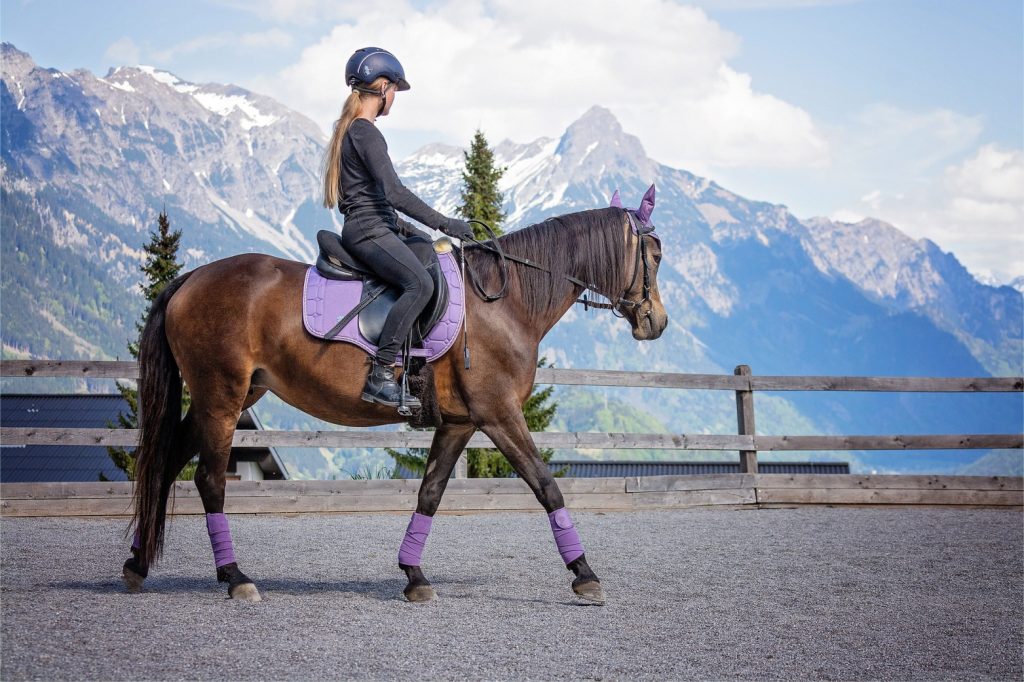
A horse that goes too slow, will not develop the right muscles.
Working gaits: The Sweet Spot
To sum it up: we want our horse to carry us in a balanced way – with not too much weight on the front legs. For that, we need the horse to move with an active hind leg. Stepping under the body and ‘lifting’ it, so to speak.
- If the horse goes too slow, the hind legs are not stepping under enough. And not ‘carrying’ the horse.
- If the horse goes too fast, the hind legs are pushing off with power, but not stepping under enough – and the horse ends up moving too much ‘on the forehand’.
This means that you really have to think about how fast or slow you let your horse walk, trot and canter.
You want to find the ‘sweet spot’ where the horse is moving actively, but not hastily.
That ‘just right’ tempo is what we call the ‘working gaits’: Working Walk, Working Trot and Working Canter.
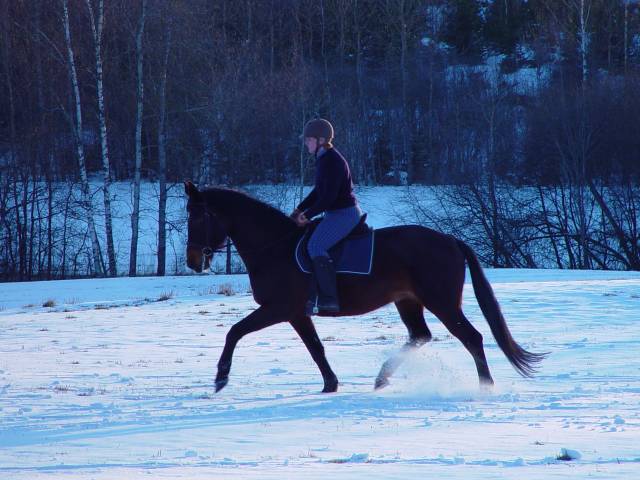
This horse shows a nice working trot. The hindleg is stepping under actively. The whole body is ‘lifted’, and the horse is ‘carrying itself’.
No Speedometer
Working walk, trot and canter does not mean that you have to ride exactly at this or that number of kilometers per hour.
Or that you have to cover an exact distance in a certain time. (That used to be something that breeding stallions were tested with, in the old days – but not anymore. )

Working gaits have nothing to do with speed!
Your horse does not have a speedometer! Working gaits have nothing to do with speed.
The best working gait is:
- The walk, trot or canter that has the optimal training effect for THIS horse in THIS moment.
It means the horse is working:
- With a relaxed mind and body (not stressed and tense);
- Balanced in his body (‘carrying himself’ – not on the forehand):
- With an active hindleg, but not hasty (long and smooth steps, not short and choppy).
Does my horse need this?
Don’t make the mistake of thinking that this is only important for competition horses, or professional riders.
ALL horses need to use their body in a ‘good way’. So they will not be damaged by us riding them.
Keep an eye out for our next blogposts on the best working gaits. There you can find examples of what the best working gait is for different horses and in different situations.
And you will also get tips on how you can figure out the best working gait for YOUR horse!
Don’t risk missing out – sign up here, and the next blog posts will automatically land in your inbox.
BONUS: you will get this FREE E-BOOK! With 10 easy tips how you can be a better rider, already today. Because our horses deserve that we are the best riders we can be…
Any questions or comments? Feel free to share with us in the comments.
